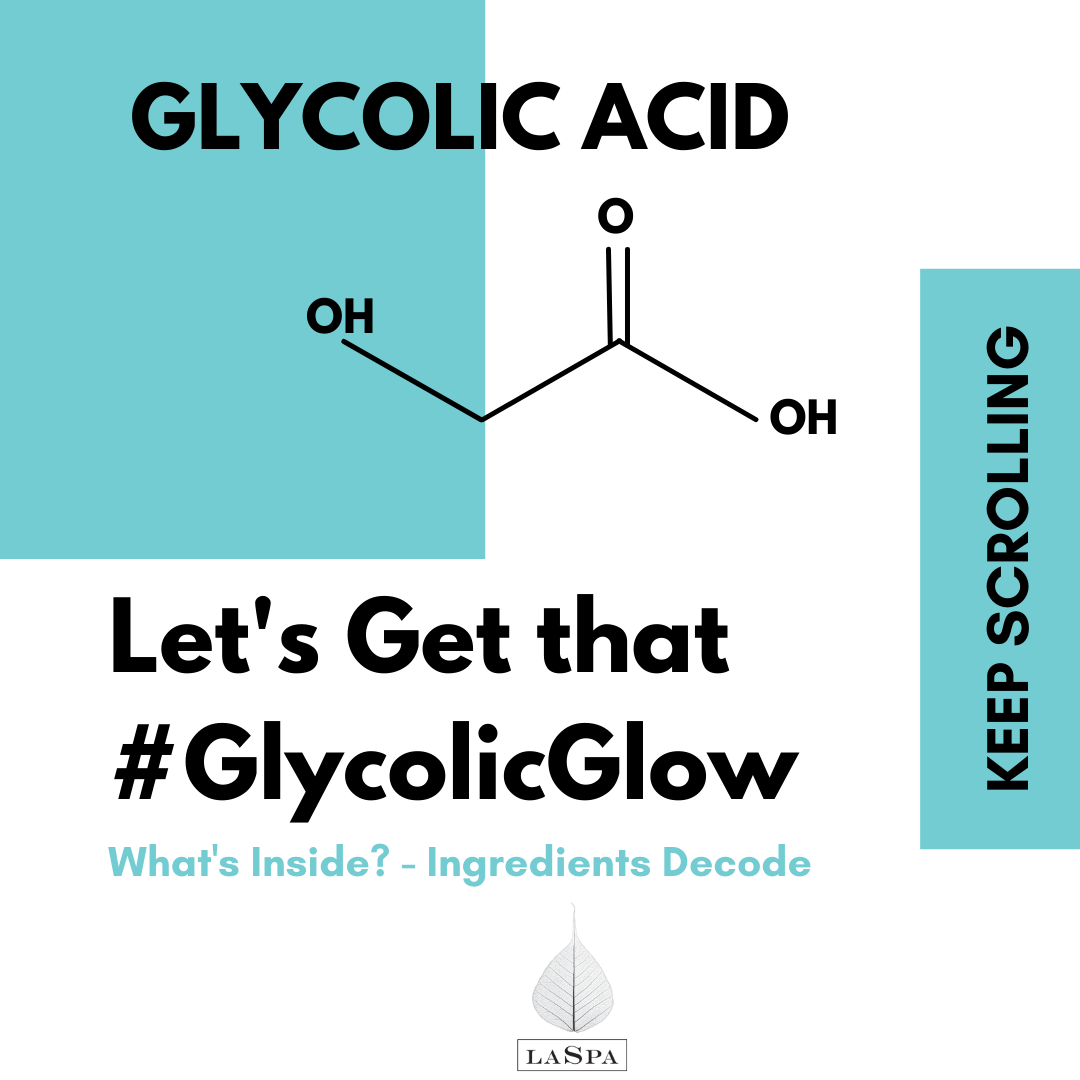Written by Dr. Vik Pandit
Vik Pandit, PhD, Chemical Engineering (UofT), CEO and co-founder at Phycus Biotechnologies.
Phycus is a manufacturer of sustainable ingredients for cosmetic companies.
What is Glycolic Acid?
Glycolic acid is the smallest alpha hydroxy acid acid. It’s very small size and low pK a is what makes it such a special, and particularly powerful exfoliant. The small acid molecule is capable of penetrating the top layer of the skin and causes a decrease in corneocyte attachment. Simply, this just means that glycolic helps to remove the matrix that keeps the dead cells together on the top layer of the skin. As these dead cells start to shed, it begins to stimulate the renewal of new skin cells. These new skin cells give a fresh, youthful look to the skin.
How is glycolic acid made?
Glycolic acid is actually a naturally occurring compound – meaning that it is found in nature and is naturally made by plants. It’s especially found in high concentrations in citrus fruits like oranges and grapefruit. But kiwi, sugarcane and even grapes are other examples of fruits that contain glycolic acid.
But just because glycolic is made in nature does not mean that the glycolic acid that is in skincare products is natural! In fact, almost all the glycolic acid on the market is synthetically made. That’s because it can be very difficult and expensive to
extract and purify glycolic acid from a natural source. For example, almost 1.6 kilograms of grapes would be required to extract enough organic acid for a typical bottle of exfoliating serum (100mL at 10%).
So this is a very inefficient process for extracting glycolic acid. But beyond efficiency, these fruit extracts aren’t pure glycolic acid. They contain a mixture of organic acids and other organic matter. These other acids like lactic, citric and malic acids are not as effective as a pure glycolic acid exfoliant. They are larger in size and weaker in strength (measured by their pKa). Both these characteristics affect how well they break that “glue” that holds the dead skin cells together.
That is why most glycolic acid is made through a chemical reaction.
So where does my glycolic acid come from? Likely formaldehyde!
Glycolic acid is produced through a process known as carbonylation. The process begins with formaldehyde as a starting material. Carbon monoxide is reacted with formaldehyde to produce glycolic acid. Then the product is recovered through a purification process. But, the purification process isn’t perfect, and the manufacturing process actually leaves behind potentially harmful and measurable impurities like formaldehyde in the finished product.
Other manufactures use monochloroacetic acid as a starting material that is also susceptible to contamination from the manufacturing process by dichloroacetic acid.
And, this is never mentioned on the ingredient list!
Formaldehyde and skincare products
The presence of formaldehyde in skincare products like cosmetics tends to be regulated by agencies like Health Canada or the FDA in the United States. While these agencies require that formaldehyde be less than 0.2%, often these products go unlabelled. Several studies found that around 20% of cosmetics in the USA and up to 30% in Denmark and Sweden contain formaldehyde-releasers in both rinse-off and leave-on products. [Burgher F. et al. (2014) Damaged Skin. In: Maibach H., Hall A. (eds) Chemical Skin Injury. Springer, Berlin, Heidelberg]
Beyond that, 0.2% is actually a remarkably high value considering that the scientific literature shows formaldehyde can cause allergic reactions in many people (ex. 8-9% in the US). In fact, concentrations as low as 200 ppm have shown to induce dermatitis. But for the most sensitive skin this can be as low as 30 ppm. [De Groot, A.C., Flyvholm, M.-A., Lensen, G., Menné, T. and Coenraads, P.-J. (2009), Formaldehyde-releasers: relationship to formaldehyde contact allergy. Contact allergy to formaldehyde and inventory of formaldehyde-releasers. Contact Dermatitis, 61: 63-85.]
A new way to make pure glycolic acid.
So, the conventional process uses formaldehyde or monochloroacetic acid as a starting material. Not only is this bad for the environment, but the production process leaves measurable quantities of potentially harmful formaldehyde in the final product. And fruit extracts are not as efficient.
Recently, a new process has been developed.
Glycolic acid from fermentation. Fermentation is a simple, biological process that uses microorganisms to produce a high purity, potent glycolic acid ingredient. It’s similar to making beer or wine, except the microorganisms produce glycolic acid instead of alcohol. The glycolic acid made by this process is a chemically identical molecule but is free of the contaminants found in the conventional manufacturing process. Not only that, but the fermentation process results in a highly potent “free acid”, unlike fruit extracts.
Where does LASPA’s glycolic acid come from?
LASPA’s glycolic acid products are all made using 100% biobased glycolic acid. The glycolic acid is derived from a fermentation process that uses microorganisms to produce a pure 100% biobased product. This ingredient, made from a unique technology helps LASPA become what it strives to be: a leading brand that uses the purest, most sustainable ingredients that are good for its customers and the planet.
But the product I buy says it’s natural glycolic acid? Is it?
This can be a challenging question to answer. But the difference between natural, synthetic, naturally derived and naturally occurring is dependent on how the chemical ingredient is made, as well as its origin.
Unless a chemical is manufactured, produced, or extracted from a natural source it is actually considered a synthetic compound, according to the USDA (United States Department of Agriculture). So, while glycolic acid is found in nature, because the conventional manufacturing process for glycolic acid uses formaldehyde or monochloroacetic acid from petrochemical sources as the starting material, the glycolic acid ingredient made by this process is synthetic.
How can I tell where my glycolic acid comes from?
Unlike their synthetic variants, naturally, derived ingredients have a mineral or a biological source as their origin. How can you tell where your glycolic acid comes from? Look for trusted monographs of organizations like USDA or NSF that certify the source of the ingredient. The
USDA, for example, uses an industry-standard known as ASTM D6866 to verify that the carbon in the cosmetic ingredient is actually coming from a plant source.
About the guest writer
Written by Vik Pandit, PhD, Chemical Engineering (UofT), CEO and co-founder at Phycus Biotechnologies.
Phycus is a manufacturer of sustainable ingredients for cosmetic companies. We specialize in developing fermentation processes to produce 100% biobased ingredients that can be used in skincare products.


